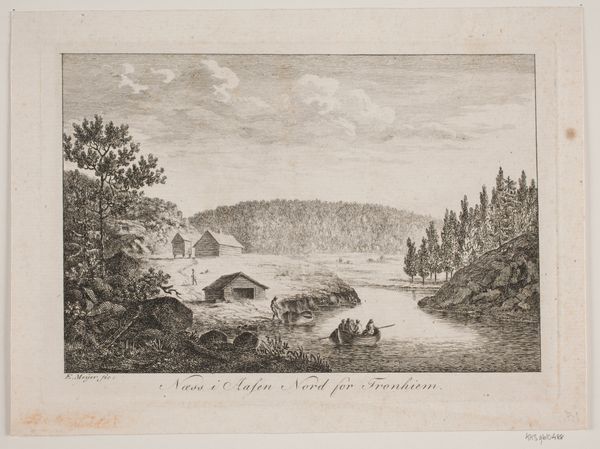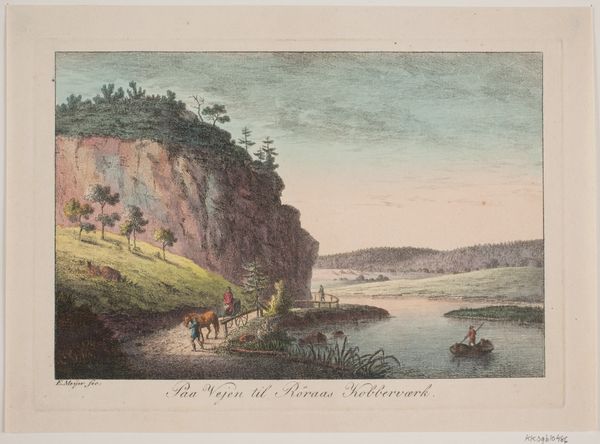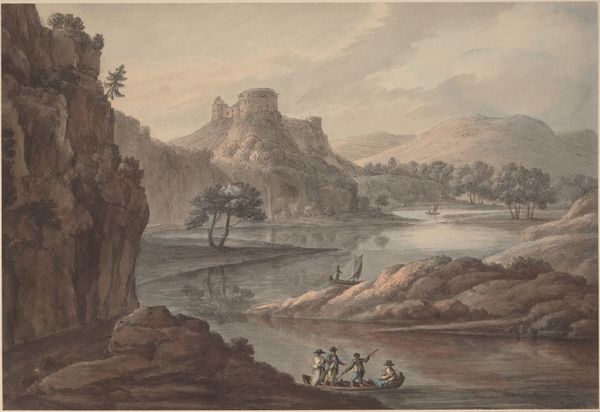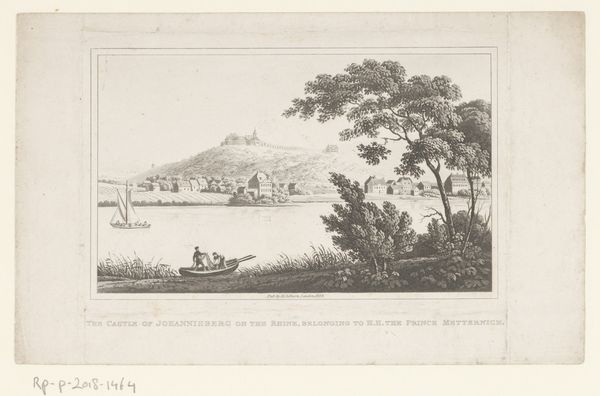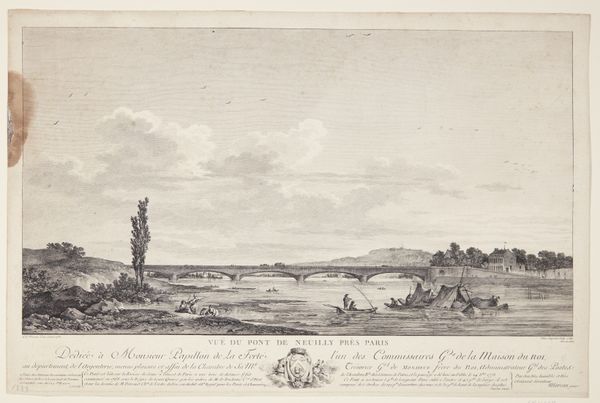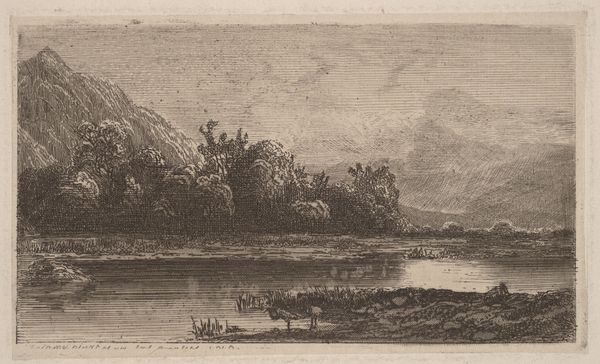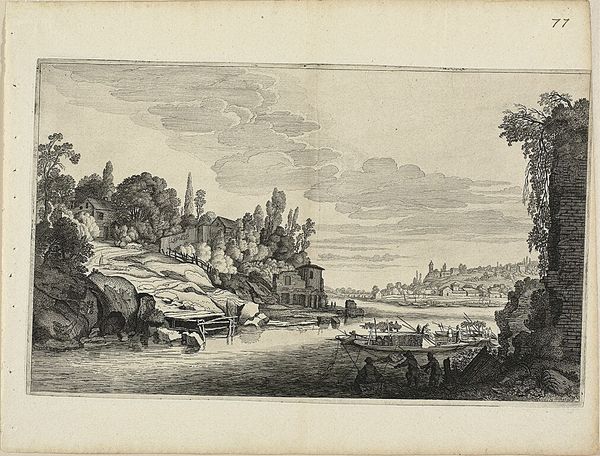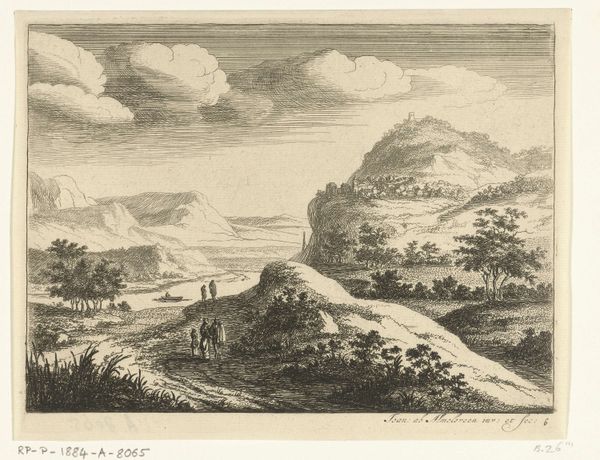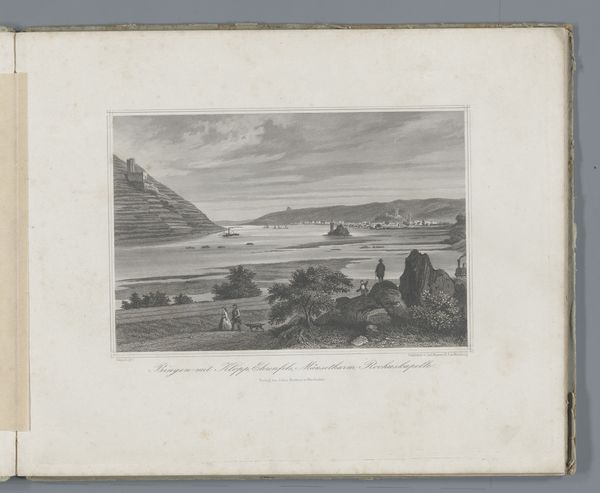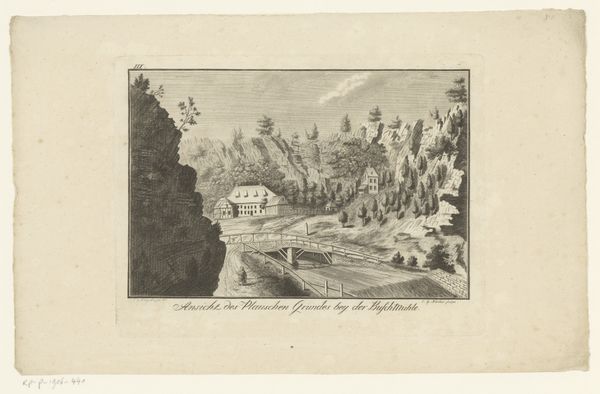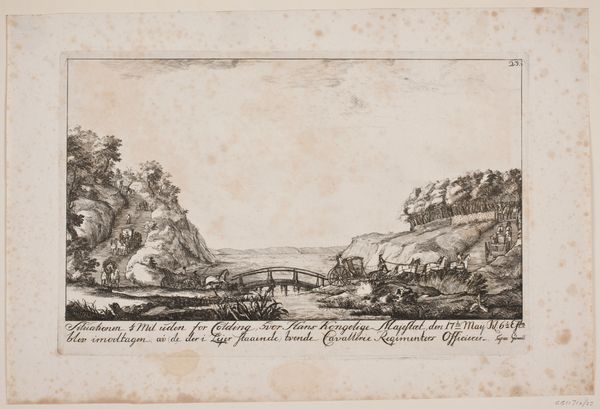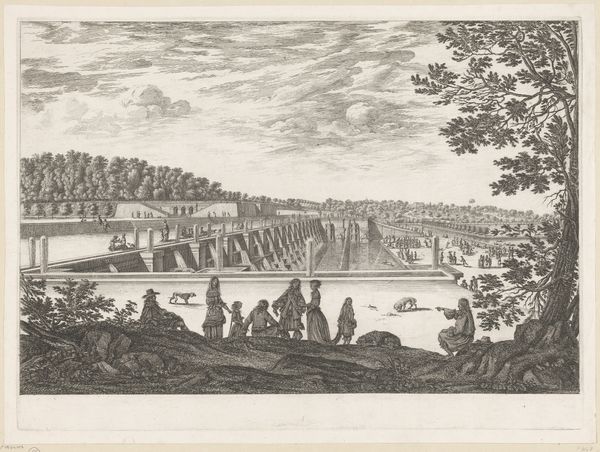
Dimensions: 145 mm (height) x 210 mm (width) (plademaal)
Curator: We are looking at Elias Meyer's engraving, "Paa Vejen til Røraas Kobberværk," made between 1763 and 1809. Editor: The tonal range immediately strikes me; the contrasts are delicate but well-defined, giving the entire composition a tranquil atmosphere, despite the suggestion of labor. Curator: Precisely! Look closely at the linear quality. The process of engraving lends itself well to capturing details of the landscape—notice the rendering of the rocky cliff on the left, and how it contrasts with the smoothness of the water. The texture speaks to Meyer’s skill with the burin. It's important to consider this as reproducible media. How was this work circulated, consumed? Editor: I'm drawn to the figures within the landscape; their placement establishes a rhythm of the working community along this route. Their relative size emphasizes the scale of the copper works against the landscape itself. It implies the imposing nature of the industrial site in this region, dwarfing these people making their way "to Røraas Kobberværk" on foot, with horses and cart, and even by boat. Curator: And, naturally, this location of Røraas Kobberværk implies resources, infrastructure, extraction of value… an engine that creates employment. Think, too, of the copper itself, the commodity, the metal traded internationally that brought this rural community to the eye of an engraver and is now immortalized here at SMK, Statens Museum for Kunst. What was it like for workers on a daily basis? Were there other economic routes tied to these industries that we aren't seeing? Editor: True, the emphasis is on linear elements. It almost flattens perspectival depth—the material of the engraving emphasizes surface over the illusion of three-dimensional space, pulling us into that historical space and demanding a second look. I now observe the artist is interested in more than just documentary. It almost imbues this industrial landscape with something poetic, a specific vision. Curator: Meyer’s artwork gives us more than just a picturesque scene. Considering it, we see an object whose existence highlights the historical intersection of art, industry, labor and nature. Editor: I agree. It reveals something of a sustained, meticulous and quiet observation, far from our contemporary, frenetic imagery, drawing me in.
Comments
No comments
Be the first to comment and join the conversation on the ultimate creative platform.
